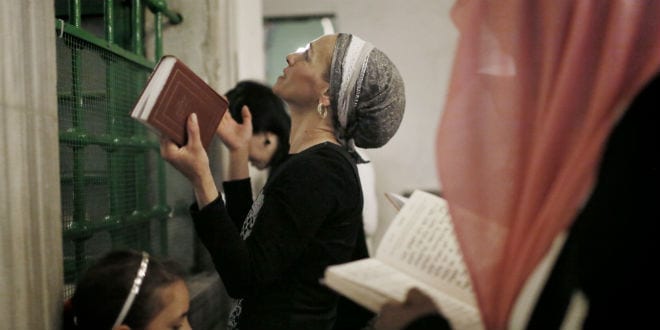Coming from a most inspiring Israeli Independence Day Prayer Service at my local synagogue in Ramat Bet Shemesh, Israel, I realized just how “messianic” our prayers are. To many Jews, “Messianic” has become almost a dirty name here in Israel, since it has come to refer to the group of Christian missionaries who subvertly try to convert Jews to Christianity. Yet the Yom Haatzmaut prayers, prepared by Israel’s Chief Rabbinate, are overtly full of references and supplications for the immediate arrival of the Messiah.
This shouldn’t be a surprise, after all, it was Judaism who introduced the notion of a Messiah into the world. The Torah is full of references to the Moshiach who we believe will herald in an age of perfection, peace and proximity to God. While many of our daily prayers make reference to the coming of the Jewish Messiah, there is an almost obsession with the arrival of the Moshiach in our prayers on Israel’s Independence Day.
The Yom Haatzmaut prayer service is available in Hebrew here.

We begin our Yom Haatzmaut service with Psalm 107 which begins by describing the ingathering of the exiles back to the Land (Israel) and the City (Jerusalem).
The next passage we read is Psalm 97 which mentions the exaltation of the righteous and the downfall of the wicked. This is followed by Psalm 98 that talks about the sounding of the Shofar and the judgment of the earth.

We then sing a specially prepared “mashup” combining the famous Shabbat song “Lecha Dodi” with Psalm 118:24 in a not so subtle reference to the “man from the family of Peretz”:
Wake up, wake up, Your light has come, rise and shine. Awaken, awaken; sing a melody, The glory of G-d to be revealed upon thee. This is the day the Lord has made; We will rejoice and be glad in it. Be not ashamed, nor confounded, Why are you downcast, why astounded? In you, refuge for My poor people will be found, The city will be rebuilt on its former mound. This is the day the Lord has made; We will rejoice and be glad in it. To right and left you’ll spread abroad, And the Eternal One you shall laud. Through the man from Peretz’s family, We shall rejoice and sing happily. This is the day the Lord has made; We will rejoice and be glad in it.
We then pray the regular Maariv evening prayer.

This is followed by the famous Shema (Deuteronomy 6:4): “Hear O’ Israel, the Lord our God, the Lord is One.”
We then repeat three times I Kings (18:39): “The Lord is God.”
The Cantor then leads the Congregation in the following declaration:
He who performed miracles for our forefathers and for us, and redeemed us from slavery to freedom, may He quickly bring us the complete redemption and gather our scattered remnants from the four corners of the world, for all of Israel are brethren, and let us say: Amen.
Next we read from Numbers (10:9-10) which describes Israel going to war and emerging victorious.
This is followed by the joyous singing of: Next Year in the Rebuilt Jerusalem!
The congregation then recites: May it be Your will our God and the God of our forefathers, that just as we merited the beginning of our redemption, so may we merit to hear the sounding of the of Shofar of our righteous Messiah, speedily in our days.

We then sing to the tune of Hatikvah the beloved Psalm 126.
The Yom Haatzmaut prayer service is concluded with the declaration established by the leading rabbi Maimonides: I believe with complete faith in the coming of the Messiah, and even if he tarries, I will wait for him each day.

The abundance of allusions to the Moshiach in our Yom Haatzmaut prayers is clear, as is the reason for the numerous Messianic references. The circumstances surrounding the rebirth of the State of Israel is nothing short of miraculous and the wonders that we are seeing unfold before our very eyes are clearly of Biblical proportions. The only explanation for Bible believers is that modern Israel is clear evidence of God’s eternal faithfulness to His people and we therefore use the holiday of Yom Haatzmaut, Israeli Independence Day to pray for the final redemption of the world with the arrival of the Moshiach.
May our prayers come true and may Israel’s 68th birthday be the year of the coming of the Moshiach and let me wish you the traditional Yom Haatzmaut greeting:
Moadim L’simcha L’geulah Shelema – מועדים לשמחה לגאולה שלמה
Happy Holiday in anticipation of the final redemption!
This article was originally published April 23, 2015.





